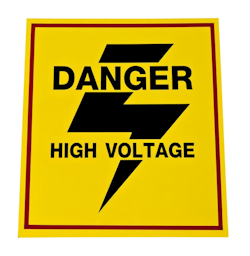General Electrical Protective Equipment and Tools
To ensure safe work practices when operating near energized electrical equipment, employees must use appropriate protective tools, equipment, and alerting techniques designed to prevent shock, burns, and other electrical hazards.
Tools and handling equipment: When working near exposed energized conductors or circuit parts, use insulated tools or handling equipment if they might make contact with such conductors or parts.
If the insulating capability of insulated tools or handling equipment is subject to damage, protect the insulating material.
Fuse handling equipment: Use fuse handling equipment, insulated for the circuit voltage, to remove or install fuses when the fuse terminals are energized.
Ropes and handlines: Make sure ropes and handlines used near exposed energized parts are nonconductive.
Shields, barriers, and materials: Use protective shields, protective barriers, or insulating materials to protect employees from shock, burns, or other electrically related injuries while they are working near exposed energized parts that might be contacted or where dangerous electrical heating or arcing might occur. When normally enclosed live parts are exposed for maintenance or repair, guard them to protect unqualified persons from contact with the live parts.
Alerting techniques: The following alerting techniques shall be used to warn and protect employees from hazards that could cause injury due to electric shock, burns, or failure of electrical equipment parts:

- Safety signs and tags: Safety signs, safety symbols, or accident prevention tags shall be used where necessary to warn employees about electrical hazards that may endanger them, as required by 1910.145.
- Barricades: Barricades shall be used in conjunction with safety signs where it is necessary to prevent or limit employee access to work areas exposing employees to uninsulated energized conductors or circuit parts. Conductive barricades may not be used where they might cause an electrical contact hazard.
- Attendants: If signs and barricades do not provide sufficient warning and protection from electrical hazards, an attendant shall be stationed to warn and protect employees.
Knowledge Check Choose the best answer for the question.
10-6. If signs and barricades do not provide sufficient warning and protection from electrical hazards, what alerting technique must be used?
You forgot to answer the question!
